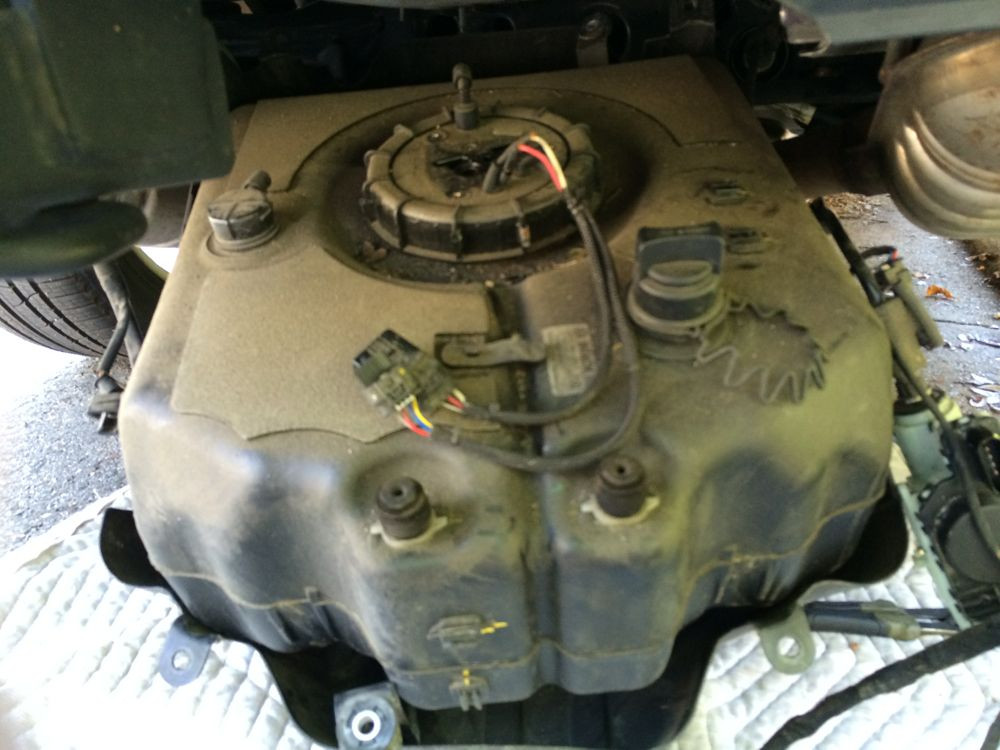Mercedes AdBlue Reset: Your Complete Troubleshooting Guide

Are you experiencing an annoying AdBlue warning light on your Mercedes-Benz dashboard? Don’t worry, CARDIAGTECH.NET is here to help. This comprehensive guide provides a deep dive into Mercedes AdBlue systems, offering practical solutions and expert advice to clear that warning light and keep your diesel running smoothly. We’ll cover everything from understanding AdBlue to performing a Mercedes AdBlue reset and recommend the best diagnostic tools for the job.
1. Understanding Mercedes-Benz AdBlue Systems
AdBlue, also known as Diesel Exhaust Fluid (DEF), is a non-toxic, colorless solution comprised of urea and deionized water. It’s a critical component of modern diesel engines, particularly in Mercedes-Benz vehicles, designed to reduce harmful nitrogen oxide (NOx) emissions.
1.1. The Role of Selective Catalytic Reduction (SCR)
AdBlue works in conjunction with Selective Catalytic Reduction (SCR) technology. Here’s how it works:
- Injection: AdBlue is injected into the exhaust stream.
- Reaction: The heat from the exhaust converts the urea into ammonia.
- Catalytic Conversion: The ammonia reacts with NOx in the catalytic converter, transforming it into harmless nitrogen and water.
This process significantly reduces the amount of NOx released into the atmosphere, helping Mercedes-Benz vehicles meet stringent emissions standards like Euro 6. According to the European Automobile Manufacturers Association (ACEA), SCR technology can reduce NOx emissions by up to 90%.
1.2. Why AdBlue is Important for Mercedes-Benz
Mercedes-Benz utilizes AdBlue to:
- Reduce Emissions: Meet increasingly strict environmental regulations.
- Improve Fuel Efficiency: Modern diesel engines can be optimized for fuel economy while still meeting emissions standards thanks to AdBlue.
- Maintain Performance: Ensure optimal engine performance and prevent potential damage from NOx buildup.
 Diesel and Adblue Fuel Caps
Diesel and Adblue Fuel Caps
1.3. AdBlue Consumption Rate
AdBlue consumption varies depending on driving style, vehicle load, and engine type. However, a typical Mercedes-Benz diesel will use approximately 1-3 liters of AdBlue per 1000 kilometers (620 miles). This translates to roughly needing to refill the AdBlue tank every 5,000 to 10,000 miles.
2. Identifying AdBlue Warning Signs
Knowing the warning signs can prevent inconvenient breakdowns and potential engine damage.
2.1. Dashboard Warning Lights
The most common indicator is the AdBlue warning light on your dashboard. This light typically illuminates in stages:
- Yellow/Amber: Indicates a low AdBlue level and suggests refilling soon. The message might display remaining mileage before a refill is mandatory.
- Red: Indicates a critically low AdBlue level, requiring immediate attention. The engine may be restricted from starting if the AdBlue tank is completely empty.
2.2. On-Screen Messages
Many Mercedes-Benz models display specific AdBlue-related messages on the instrument cluster screen. These messages might include:
- “Refill AdBlue. See Operator’s Manual.”
- “AdBlue level low. Starting not possible in [XXX] miles.”
- “Malfunction. No engine start possible.”
2.3. Performance Issues
In some cases, a severely low AdBlue level can lead to reduced engine power or a restricted top speed as the vehicle enters a “limp mode” to prevent further emissions violations.
3. How to Check Your Mercedes-Benz AdBlue Level
Regularly checking your AdBlue level is crucial. Here’s how:
3.1. Using the Instrument Cluster
Most modern Mercedes-Benz vehicles allow you to check the AdBlue level through the instrument cluster menu. The exact steps vary depending on the model, but generally involve navigating to the “Service,” “Vehicle,” or “AdBlue” section. Consult your owner’s manual for specific instructions.
3.2. Visual Inspection (If Applicable)
Some older models might have a dipstick in the AdBlue tank, similar to checking engine oil. Refer to your owner’s manual to see if your vehicle is equipped with this feature.
 Silver Mercedes-Benz C-Class Side
Silver Mercedes-Benz C-Class Side
3.3. Diagnostic Tools
Advanced diagnostic tools, available at CARDIAGTECH.NET, can provide precise AdBlue level readings and identify any system faults.
4. Refilling Your Mercedes-Benz AdBlue Tank
Refilling is a straightforward process, but attention to detail is important.
4.1. Locating the AdBlue Filler Cap
The AdBlue filler cap is typically located in one of the following places:
- Next to the fuel filler cap.
- Under the hood (bonnet).
- In the trunk (boot), often under the spare tire cover.
Consult your owner’s manual if you’re unsure of the location.
4.2. Choosing the Right AdBlue
Ensure you purchase AdBlue that meets the ISO 22241 standard. This ensures the quality and purity of the fluid, preventing potential damage to your SCR system. You can find AdBlue at most auto parts stores, gas stations, and Mercedes-Benz dealerships.
4.3. Step-by-Step Refilling Guide
- Safety First: Wear gloves and eye protection to avoid skin and eye irritation.
- Open the Cap: Carefully remove the AdBlue filler cap.
- Refill: Using a专用AdBlue容器, pour the fluid into the tank until it reaches the maximum level indicated. Avoid overfilling.
- Clean Up: Wipe up any spills with a damp cloth.
- Close the Cap: Securely tighten the AdBlue filler cap.
4.4. AdBlue Refill Capacity
The AdBlue tank capacity varies depending on the Mercedes-Benz model. Refer to your owner’s manual for the exact capacity. Typically, tanks range from 10 to 25 liters.
5. Mercedes AdBlue Reset: Clearing the Warning Light
Sometimes, even after refilling the AdBlue tank, the warning light remains illuminated. Here’s how to perform a Mercedes AdBlue reset.
5.1. Standard Reset Procedure
This procedure works for many Mercedes-Benz models:
- Turn on the Ignition: Insert the key and turn the ignition to the “on” position (position 2), but do not start the engine.
- Wait: Leave the ignition on for approximately one minute (60 seconds). This allows the system to recognize the new AdBlue level.
- Start the Engine: Start the engine and check if the warning light has disappeared.
5.2. Using the Steering Wheel Controls
Some models require using the steering wheel controls:
- Turn on the Ignition: As above, turn the ignition to the “on” position without starting the engine.
- Navigate the Menu: Use the steering wheel buttons to navigate to the “Service” or “Vehicle” menu.
- AdBlue Level: Look for an “AdBlue Level” or similar option. Select it.
- Confirmation: The system should display the new AdBlue level. Start the engine to confirm the warning light is off.
5.3. Resetting with Diagnostic Tools (CARDIAGTECH.NET Recommendation)
For a reliable and thorough reset, using a diagnostic tool from CARDIAGTECH.NET is highly recommended. These tools can:
- Read AdBlue Levels: Accurately display the AdBlue level in the tank.
- Clear Fault Codes: Erase any stored fault codes related to the AdBlue system.
- Perform System Tests: Run tests on the AdBlue pump, injector, and other components.
- Force Regeneration: Initiate a forced regeneration of the diesel particulate filter (DPF), which is often linked to the AdBlue system.
Recommended Tools from CARDIAGTECH.NET:
- Launch X431 V+: A comprehensive diagnostic tool with advanced functions for Mercedes-Benz vehicles.
- Autel MaxiSys MS906BT: A powerful and versatile diagnostic scanner with excellent coverage for European vehicles.
- iCarsoft MB V3.0: A more affordable option specifically designed for Mercedes-Benz diagnostics.
These tools will allow you to perform a Mercedes AdBlue reset efficiently and diagnose any underlying issues that may be preventing the warning light from clearing. Contact CARDIAGTECH.NET at +1 (641) 206-8880 for expert advice on selecting the right tool for your needs.
 AdBlue Warning Light
AdBlue Warning Light
6. Troubleshooting Common AdBlue Problems
If the AdBlue warning light persists after refilling and attempting a reset, there may be underlying issues.
6.1. Faulty AdBlue Level Sensor
The AdBlue level sensor can malfunction, providing inaccurate readings to the vehicle’s computer. This can trigger the warning light even when the tank is full.
- Diagnosis: Use a diagnostic tool to check the sensor readings. If the readings are inconsistent or illogical, the sensor may need replacement.
- Solution: Replace the faulty AdBlue level sensor.
6.2. Clogged AdBlue Injector
The AdBlue injector can become clogged with crystallized urea, preventing proper AdBlue delivery.
- Diagnosis: Check the injector for signs of crystallization. Use a diagnostic tool to perform an injector test.
- Solution: Clean the injector or replace it if cleaning is not effective.
6.3. Malfunctioning AdBlue Pump
The AdBlue pump is responsible for delivering AdBlue from the tank to the injector. If the pump fails, AdBlue delivery will be disrupted.
- Diagnosis: Use a diagnostic tool to check the pump’s operation. Listen for the pump running when the system is activated.
- Solution: Replace the malfunctioning AdBlue pump.
6.4. NOx Sensor Issues
The NOx sensors monitor the levels of nitrogen oxides in the exhaust stream. If these sensors are faulty, they can trigger AdBlue-related warning lights.
- Diagnosis: Use a diagnostic tool to check the NOx sensor readings.
- Solution: Replace the faulty NOx sensor(s).
6.5. Wiring Problems
Damaged or corroded wiring can disrupt the communication between the AdBlue system components and the vehicle’s computer.
- Diagnosis: Inspect the wiring harness for any signs of damage or corrosion.
- Solution: Repair or replace the damaged wiring.
6.6. Software Glitches
In rare cases, software glitches can cause AdBlue warning lights to illuminate incorrectly.
- Diagnosis: Check for any available software updates for your vehicle’s engine control unit (ECU).
- Solution: Update the ECU software to the latest version.
7. Preventing AdBlue System Problems
Proactive maintenance can significantly reduce the likelihood of AdBlue system issues.
7.1. Use High-Quality AdBlue
Always use AdBlue that meets the ISO 22241 standard. Avoid cheap, unbranded fluids that may contain impurities.
7.2. Regular Refills
Don’t wait until the AdBlue tank is completely empty before refilling. Regularly topping up the tank can help prevent crystallization and injector clogging.
7.3. Scheduled Maintenance
Follow your Mercedes-Benz’s recommended maintenance schedule. This includes inspecting the AdBlue system components and replacing any worn parts.
7.4. Diagnostic Scans
Periodically scan your vehicle’s computer for any stored fault codes, even if there are no apparent problems. This can help identify potential issues early on. CARDIAGTECH.NET offers a wide range of diagnostic tools to assist with this.
8. The Importance of Professional Servicing
While many AdBlue-related tasks can be performed by DIY enthusiasts, some repairs require specialized knowledge and equipment.
8.1. When to Seek Professional Help
- If you are not comfortable working on your vehicle.
- If you are unable to diagnose the problem.
- If the AdBlue warning light persists after attempting basic troubleshooting.
- If the repair requires specialized tools or software.
8.2. Finding a Qualified Technician
- Look for a technician with experience working on Mercedes-Benz vehicles.
- Ensure the technician has the necessary diagnostic equipment.
- Ask for a written estimate before authorizing any repairs.
Stratstone Mercedes-Benz dealerships are a trusted and practical option, and their trained technicians are on hand to carry out an AdBlue tank refill for you.
9. Benefits of Using CARDIAGTECH.NET Diagnostic Tools
CARDIAGTECH.NET provides a wide range of diagnostic tools tailored to Mercedes-Benz vehicles, offering numerous benefits:
- Accurate Diagnostics: Pinpoint the exact cause of AdBlue system problems.
- Efficient Repairs: Quickly and effectively clear AdBlue warning lights and resolve related issues.
- Cost Savings: Avoid unnecessary repairs by accurately diagnosing the problem the first time.
- Peace of Mind: Ensure your Mercedes-Benz is running optimally and meeting emissions standards.
Contact CARDIAGTECH.NET today at 276 Reock St, City of Orange, NJ 07050, United States or call us at +1 (641) 206-8880 to learn more about our diagnostic tools and how they can help you maintain your Mercedes-Benz. Our expert team is ready to assist you in selecting the right tool for your specific needs.
10. Addressing Customer Challenges with CARDIAGTECH.NET
We understand the challenges faced by automotive technicians and shop owners. Here’s how CARDIAGTECH.NET helps address those challenges:
10.1. Enhancing Efficiency
Our diagnostic tools streamline the repair process, reducing diagnostic time and increasing overall shop efficiency.
10.2. Improving Accuracy
Accurate diagnostics minimize the risk of misdiagnosis and unnecessary repairs, saving time and money.
10.3. Staying Up-to-Date
We offer tools with regular software updates, ensuring compatibility with the latest Mercedes-Benz models and technologies.
10.4. Increasing Profitability
By providing efficient and accurate diagnostic solutions, we help you increase your shop’s profitability and customer satisfaction.
Are you ready to elevate your automotive repair capabilities and conquer those challenging Mercedes-Benz AdBlue issues? Contact CARDIAGTECH.NET today at +1 (641) 206-8880 for a personalized consultation. Let us guide you toward the perfect diagnostic solution tailored to your specific needs and budget. Our team is standing by to answer your questions and empower you with the tools you need to succeed. Don’t delay – unlock the power of precision diagnostics with CARDIAGTECH.NET!
 Fuel Pumps
Fuel Pumps
FAQ: Mercedes AdBlue Reset and Troubleshooting
Here are some frequently asked questions about Mercedes-Benz AdBlue systems:
-
What is AdBlue, and why is it used in Mercedes-Benz diesel vehicles?
AdBlue, also known as Diesel Exhaust Fluid (DEF), is a non-toxic solution of urea and deionized water used in Selective Catalytic Reduction (SCR) systems to reduce harmful nitrogen oxide (NOx) emissions from diesel engines. -
How do I know when my Mercedes-Benz needs an AdBlue refill?
A warning light will appear on the dashboard, often accompanied by a message on the instrument cluster indicating low AdBlue levels. -
Where can I purchase AdBlue for my Mercedes-Benz?
AdBlue is available at most auto parts stores, gas stations, and Mercedes-Benz dealerships. -
How do I refill the AdBlue tank in my Mercedes-Benz?
Refer to your owner’s manual for the location of the AdBlue filler cap. Carefully pour AdBlue into the tank until it reaches the maximum level, avoiding overfilling. -
What do I do if the AdBlue warning light stays on after refilling the tank?
Try the standard reset procedure (turn on ignition, wait, start engine). If that doesn’t work, use a diagnostic tool to clear any fault codes. -
Can I drive my Mercedes-Benz if the AdBlue tank is completely empty?
No. Most Mercedes-Benz models will prevent the engine from starting if the AdBlue tank is empty. -
What are some common problems associated with the AdBlue system?
Common problems include a faulty level sensor, clogged injector, malfunctioning pump, and NOx sensor issues. -
How can I prevent problems with the AdBlue system in my Mercedes-Benz?
Use high-quality AdBlue, regularly refill the tank, and follow your vehicle’s recommended maintenance schedule. -
When should I seek professional help for AdBlue system problems?
If you are unable to diagnose the problem, the warning light persists after troubleshooting, or the repair requires specialized tools or software. -
What are the benefits of using CARDIAGTECH.NET diagnostic tools for AdBlue system repairs?
CARDIAGTECH.NET tools provide accurate diagnostics, efficient repairs, cost savings, and peace of mind by ensuring your Mercedes-Benz is running optimally.



